Silent Era Home Page > Home Video > A Fool There Was

Reviews of silent film releases on home video.
Copyright © 1999-2025 by Carl Bennett
and the Silent Era Company.
All Rights Reserved. |
|
A Fool
There Was
(1915)
|
In the film that established her career as a vampish sex symbol (her film debut), Theda Bara is a dark and mysterious figure unlike any other character the popular screen had yet seen in 1915. While earlier films had addressed the subject, A Fool There Was brought the concept of the female vampire into the popular cinematic limelight with both dread and lust. In the film, Bara exemplified everything that frightened and threatened the upstanding citizens of the upper and middle classes of the civilized societies of the world. Not unlike the ‘vice scare’ films of the early 1930s, there is something of a warning to women everywhere in the film: to be diligent to divert their men from the lures of these dark and evil women. A Fool There Was then was part social commentary and part sexual titillation. And while the sex is nonexistent the film, the implication of forbidden and deadly sex permeates the storyline. Each female viewer recognized the risks of possibility and despised the vamp (the assumed antithesis of each female viewer), and each male viewer recognized the attraction of lust and secretly fantasized (the assumed paradigm of each male viewer). Like martyrs, women of dignity endured the shame of loss to the vampire. Like helpless moths, men of weak will are drawn to the vamp’s deadly flame. The vamp first lures with sex appeal, then destroys without remorse by control of the will. Lure and dominance, dominance then destruction.
Thus A Fool There Was tapped into one aspect of what is today called ‘urban myths.’ Like the stage play upon which it based, the film exploited the emotions of its audience by playing on the conflict of their fears and forbidden desires. Like helpless voyeurs, the audiences were manipulated by the film into both indignance and secret desire. While ‘decent’ women could not visualize themselves as the vamp and would thus become indignant, ‘decent’ men could visualize themselves as the hypnotized victims of lust. Thus sex becomes an all-powerful tool of control to be submitted to and despised. The filmmakers were not unaware of this and actively exploited the audiences’ secret desires to both hate and submit. Yet, when one looks at A Fool There Was and its subject matter objectively, this analysis of the film and its assumed power to manipulate perpetuates both the myth of the female vampire and the myth of ruthlessly manipulative Hollywood filmmakers. We, like the audiences of 1915, must be emotionally vested in these myths to derive furtive pleasure from the film.
‘Wealthy lawyer and statesman’ John Schuyler (Edward José) is to be sent to England as a special envoy by the Secretary of State. His wife (Mabel Frenyear) and daughter (Runa Hodges) are to travel with him, but his sister-in-law (May Allison) falls from a car in a sudden accident. His wife decides she must remain at home in the States to care for her sister. Schuyler departs on a boat to England and is approached immediately by the vamp (Theda Bara), who has targeted the Schuyler family due to a social snub on the part of Mrs. Schuyler. There is no exposition as to the beginning of the relationship. It’s simply a done deal within two months of his departure from home. (Whether this leap of progression is due to missing footage is unknown by me.) On an excursion in Italy, the illicit couple are spotted by the new bride of the Schuyler family’s doctor while they are on their honeymoon.
In the States, the sister-in-law reads of the affair in a newspaper gossip column and shares the information with Tom (Clifford Bruce), a family friend. John Schuyler, meanwhile, soon discovers that he is socially scorned for reasons unfathomed by him. He tries to send a telegram (there’s a lot of free advertising for Western Union in the film) to signal his return to his home, but the vamp smiles and throws it into a fire. He is then dismissed from his envoy position due to his public indiscretions. Returning to America together, Schuyler and the vamp rent apartments and he calls upon his staff, some of whom quit on the spot because of the affair. Tom tracks down Shuyler but cannot convince him to leave the dark woman. One day, riding in open autos downtown, Schuyler and the vamp find they are riding side by side with Schuyler’s wife and daughter in the next auto. His daughter appeals openly for his return. He hides his ashamed face, with the vamp smiling and waving to the others.
Schuyler, his hands shaking and his hair now white, drinks to excess as the harridan vamp hovers over him. Meanwhile, the wife suffers nobly. Eventually the vamp leaves him. After six months, he is a drunken ruin. The wife dutifully comes to him to appeal for him to come home. The vamp opportunely returns, presumably to bilk more money from Schuyler, and the wife leaves in shame as the vamp demonstrates her control with a kiss, crumbling any of Schuyler’s remaining resolve. Soon the Schuyler apartments are full of partying sychophants. John chases them off, vaguely aware of the shambles of his life caused by the vamp. Tom again comes to Schuyler to roust him out of his stupor, this time bringing his daughter in an attempt to wrest him from the vamp’s clutches. It nearly works, until the vamp again appears and John staggers to her like a junkie to a fix. With memories of happier times going through his sick mind, Schuyler attempts to reject the addiction that has ruined his life (vamp and alcohol) and collapses into a sudden death. In the closing shot, the pleased vamp crushes rose petals and drops them over his dead body.
The film begins with excerpts from the Kipling poem and introductory shots of Theda Bara and Edward José, and further quotations accent the storyline. The story itself is told in a style typical of the time. The filmmakers characterize the female vampire as a narcotic, an addiction that wastes the body and mind. The victim is quickly sapped of his free will yet remains conscious of his helplessness, powerless to stop the destruction of his life. The vamp herself is aggressively destructive and totally without remorse, as is conveyed by her indifference to her previous victims and in the final shot of the film. Ultimately, the film is a fun mix of social history and Hollywood mythology, composed of pedagogical examples of good versus evil and of piousness and guilty pleasure.
— Carl Bennett
|
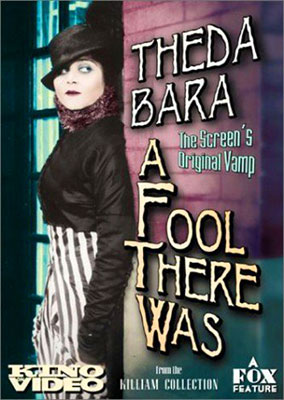 Kino on Video Kino on Video
2002 DVD edition
A Fool There Was (1915), color-toned black & white, 67 minutes, not rated.
Kino International, K241, UPC 0-38329-02412-3.
One single-sided, single-layered, Region 0 NTSC DVD disc; 1.33:1 aspect ratio picture in full-frame 4:3 (720 x 480 pixels) interlaced scan image encoded in SDR MPEG-2 format at 5.5 Mbps average video bit rate (capable of progressive scan upscaling to 60 fps); Dolby Digital (AC3) 2.0 stereo sound encoded at 192 Kbps audio bit rate; English language intertitles, no subtitles; 10 chapter stops; 2-page insert sheet; standard DVD keepcase; $29.95.
Release date: 2 April 2002.
Country of origin: USA
Ratings (1-10): video: 6 / audio: 7 / additional content: 3 / overall: 7.
|

This DVD edition has been prepared from a very-good 1981 preservation print from the Paul Killiam collection that appears to have been prepared from 35mm and 16mm reduction print elements. The print is soft in image details, with loss of detail in highlights and shadows, in many of the shots (16mm footage), with more image detail and a pleasing range of greytones sustained in others (35mm footage). The print is lightly speckled, scuffed and scratched (and has an annoying hair in the gate in the shot beginning at 13:50 that probably originated in the camera), with occasional moments of pronounced print damage including a number of brief fragments of missing footage. The transfer is presented full-frame and its cropping is generally open. What image detail was available in the source print appears to have been well-maintained in this video transfer.
A well-arranged music score is performed on piano by Philip Carli. The stereo recording is well done, however the audio does have a minor problem of a crackling glitch that appears at 5:47, 5:49, 5:55 and 6:02.
The disc’s supplemental section includes the complete text of Rudyard Kipling’s poem, “The Vampire,” the literary source of the play by Porter Emerson Brown upon which A Fool There Was was based. Also included is an excerpt on the film from Terry Ramsaye’s film history A Million and One Nights, and a review from The New York Dramatic Mirror. The section is rounded out with a handful of Theda Bara portraits, including well-known photos of her hovering over a man’s skeleton.
While we could have hoped that the film had survived the years in a better state than is presented here (and it may have in some of the world’s film archives), the film is presented in a fairly complete and quite viewable form, with appropriate and able musical accompaniment. We recommend this disc, as long as collectors are aware of its modest compromises.
|
|
This Region 0 NTSC DVD edition is available directly from . . .
|

|
|
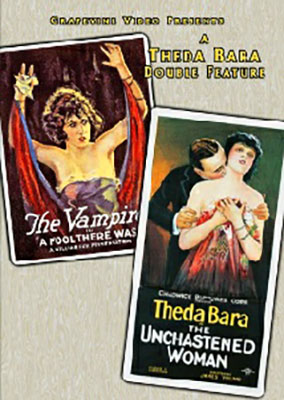 Grapevine Video Grapevine Video
2014 DVD edition
A Fool There Was (1915), black & white, 56 minutes, not rated, with The Unchastened Woman (1925), black & white, 48 minutes, not rated.
Grapevine Video, no catalog number, UPC 8-42614-10671-2.
One single-sided, single-layered, Region 0 NTSC DVD-R disc; 1.33:1 aspect ratio picture in full-frame 4:3 (720 x 480 pixels) interlaced scan image encoded in SDR MPEG-2 format at ? Mbps average video bit rate (capable of progressive scan upscaling to ? fps); Dolby Digital (AC3) 2.0 stereo sound encoded at ? Kbps audio bit rate; English language intertitles, no subtitles; chapter stops; standard DVD keepcase; $16.95.
Release date: July 2014.
Country of origin: USA
|
|
This DVD-R edition has likely been mastered from a 16mm reduction print.
The film is accompanied by a music score composed and performed by David Knudtson.
Sight unseen, this is our recommended home video edition of the film.
|
|
This
Region 0 NTSC DVD-R edition is available directly from . . .
|

|
|
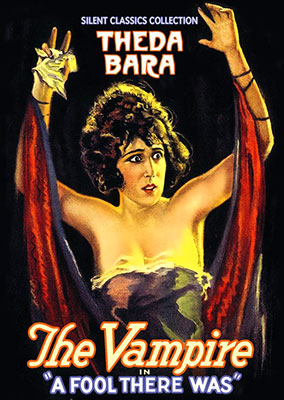 Alpha Video Alpha Video
2010 DVD edition
A Fool There Was (1915), black & white, 83 minutes, not rated, with The Sultan’s Wife (1917), black & white, ? minutes, not rated.
Alpha Home Entertainment, distributed by Oldies.com,
ALP 6484D, UPC 0-89218-64849-5.
One single-sided, single-layered, Region 0 NTSC DVD-R disc; 1.33:1 aspect ratio picture in full-frame 4:3 (720 x 480 pixels) interlaced scan image encoded in SDR MPEG-2 format at ? Mbps average video bit rate (capable of progressive scan upscaling to ? fps); Dolby Digital (AC3) 2.0 stereo sound encoded at ? Kbps audio bit rate; English language intertitles, no subtitles; chapter stops; standard DVD keepcase; $7.98 (raised again to $9.99).
Release date: 26 December 2010.
Country of origin: USA
|
|
This budget DVD edition may have been mastered from a 16mm reduction print or even an 8mm reduction print.
The film is accompanied by a music score compiled by Don Kinnier.
We recommend the Kino edition noted above.
|
This
Region 0 NTSC DVD-R edition is available from
ALPHA VIDEO through . . .
|

|
|
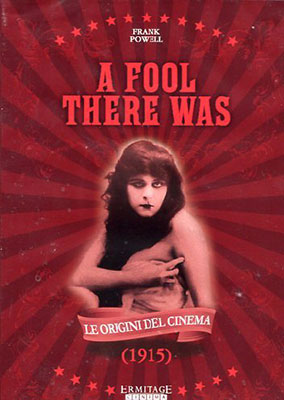 Ermitage Cinema Ermitage Cinema
2011 DVD edition
A Fool There Was (1915), black & white, 66 minutes, not rated.
Ermitage Cinema,
unknown catalog number, unknown UPC number.
One single-sided, single-layered, Region 2 PAL DVD disc; 1.33:1 aspect ratio picture in full-frame 4:3 (720 x 576 pixels) interlaced scan image encoded in SDR MPEG-2 format at ? Mbps average video bit rate (capable of progressive scan upscaling to ? fps); Dolby Digital (AC3) 2.0 stereo sound encoded at ? Kbps audio bit rate; Italian language intertitles, no subtitles; chapter stops; standard DVD keepcase; unknown suggested retail price.
Release date: 2011.
Country of origin: Italy
|
|
This Italian PAL DVD edition has been mastered from unknown print materials.
North American collectors will need a region-free PAL DVD player capable of outputting an NTSC-compatible signal to view this edition.
|
This Region 2 PAL DVD edition has been discontinued
and is . . .
|

|
|
|
Other silent era THEDA BARA films available on home video.
|
|

LINKS IN THIS COLUMN
MAY TAKE YOU TO
EXTERNAL WEBSITES
•
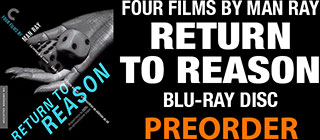
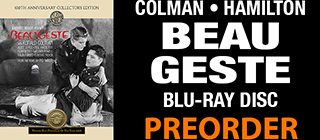


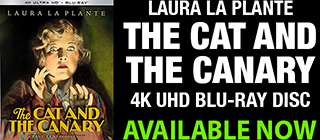

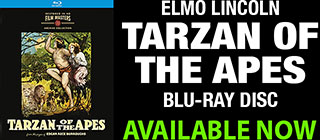
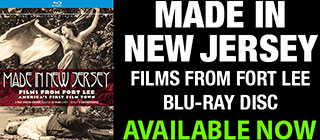

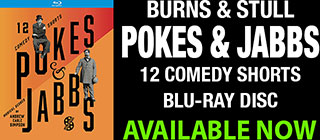



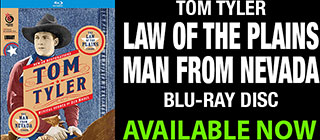

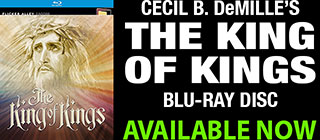
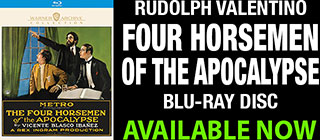
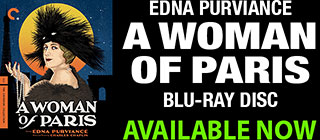
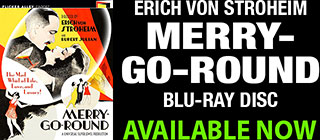
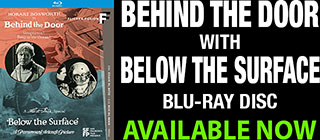

•
|




































